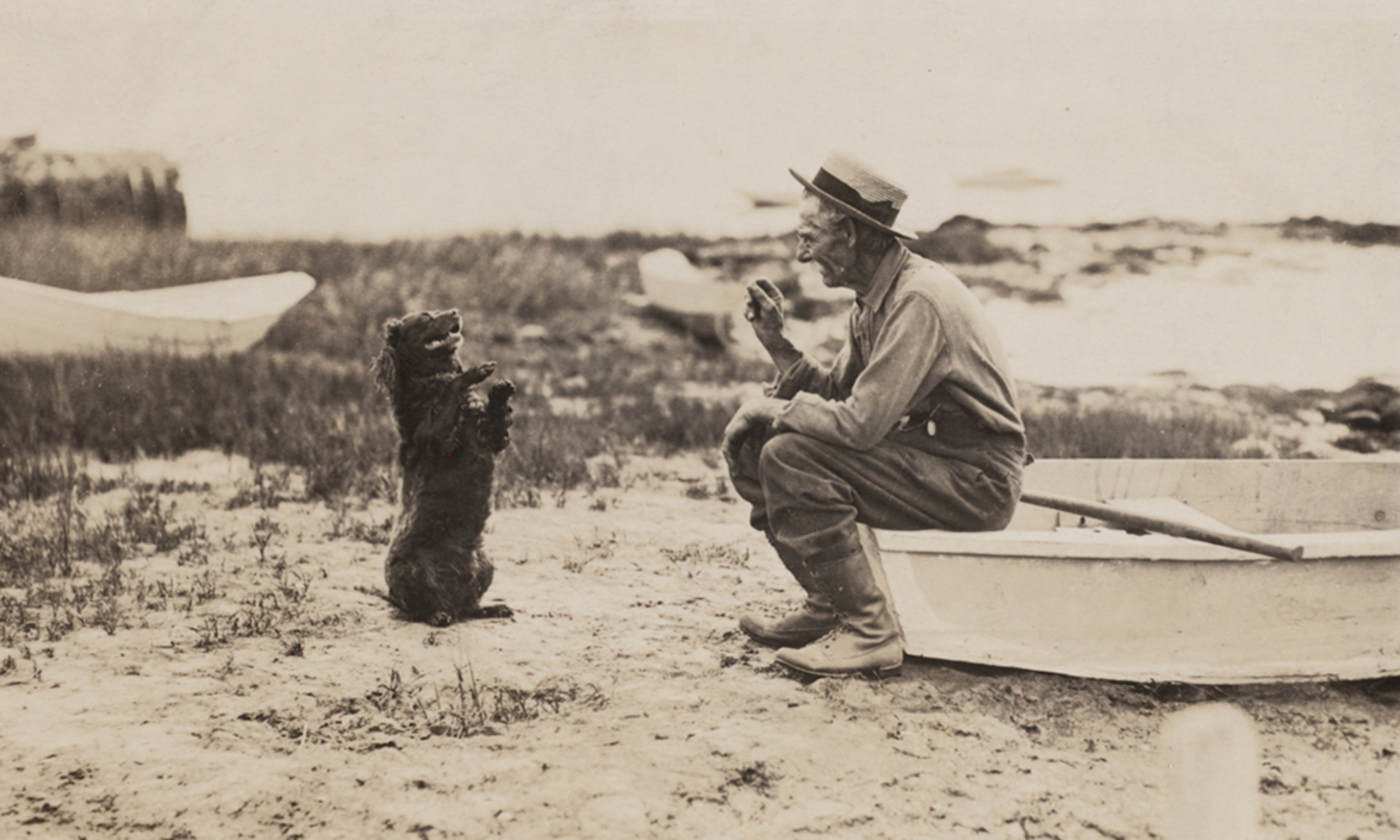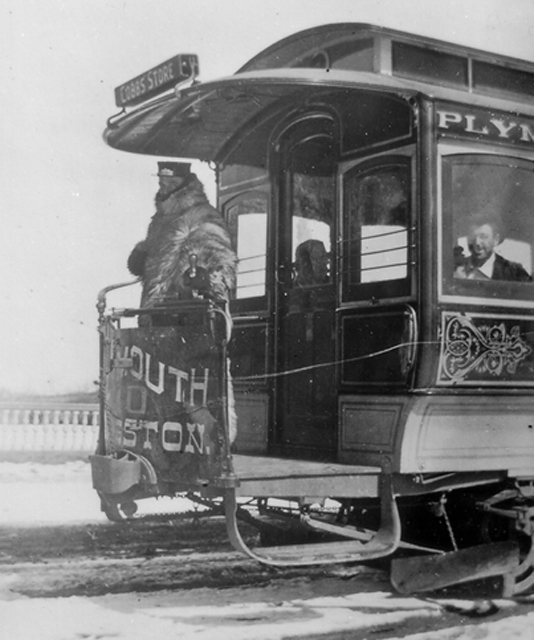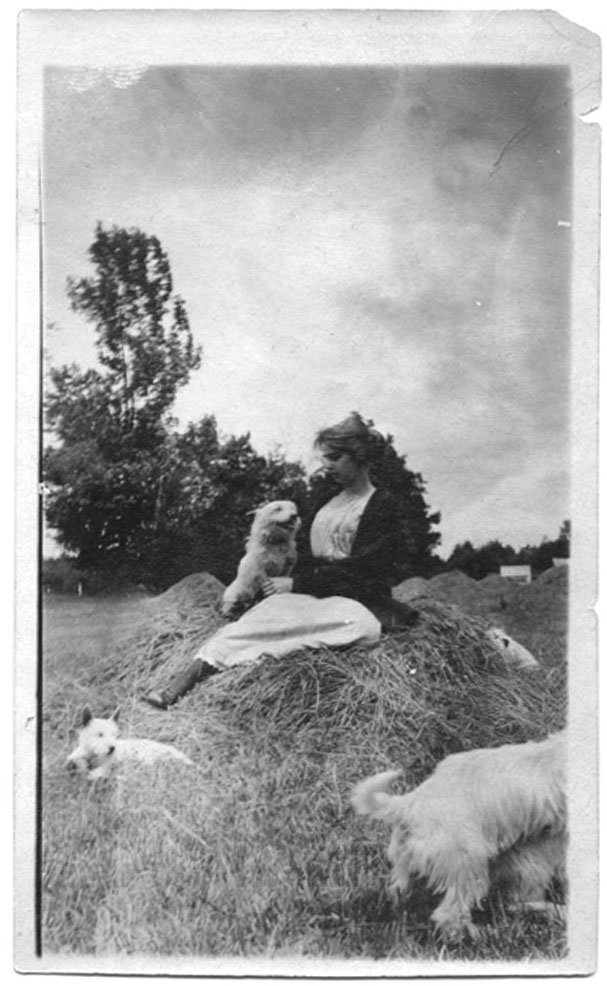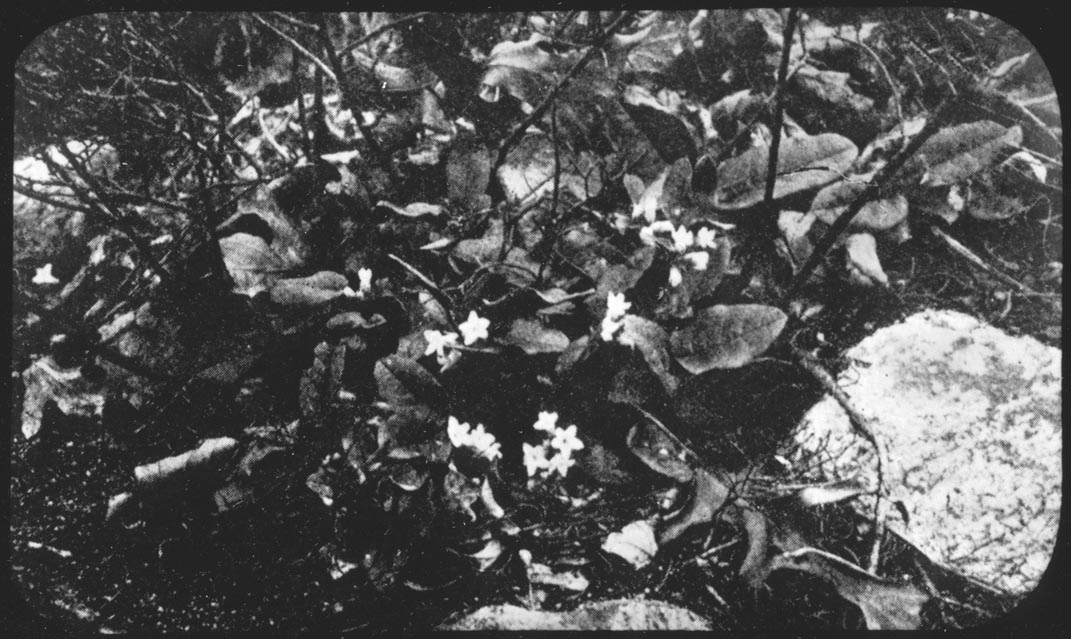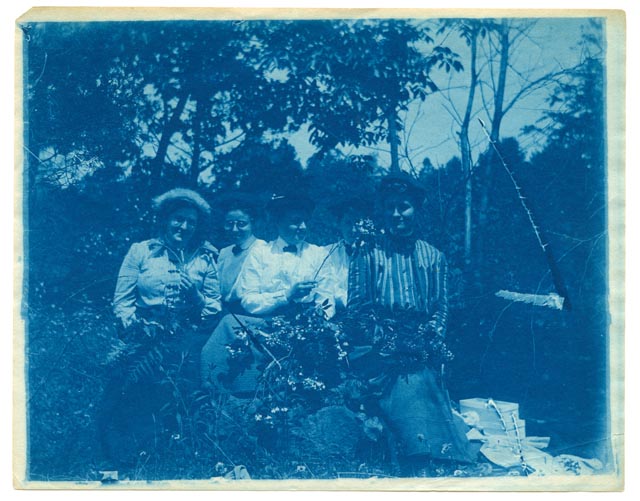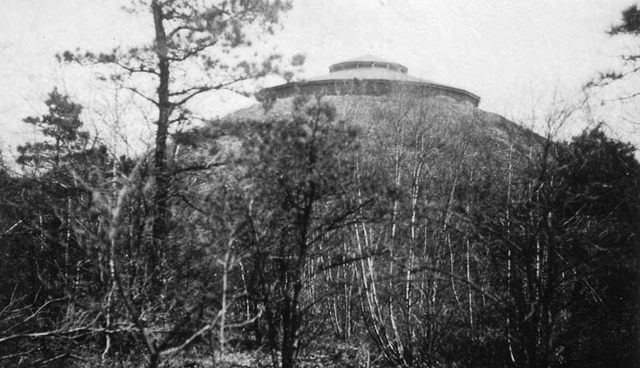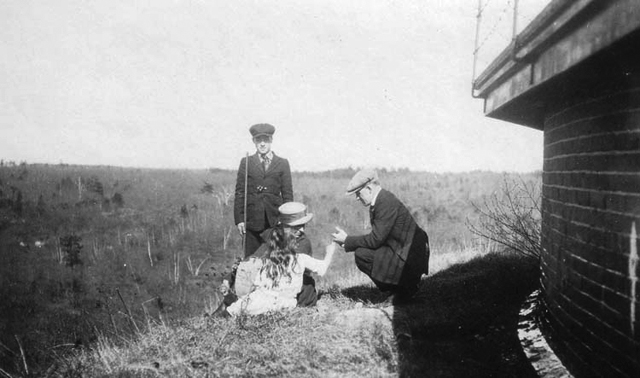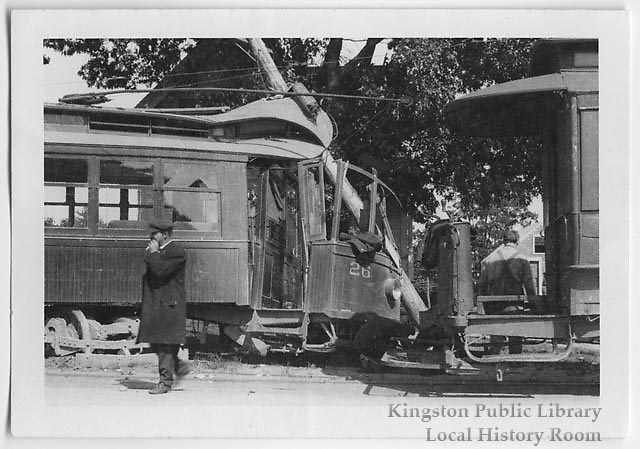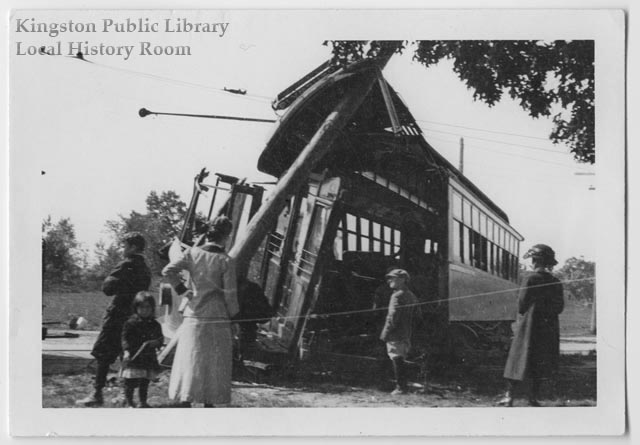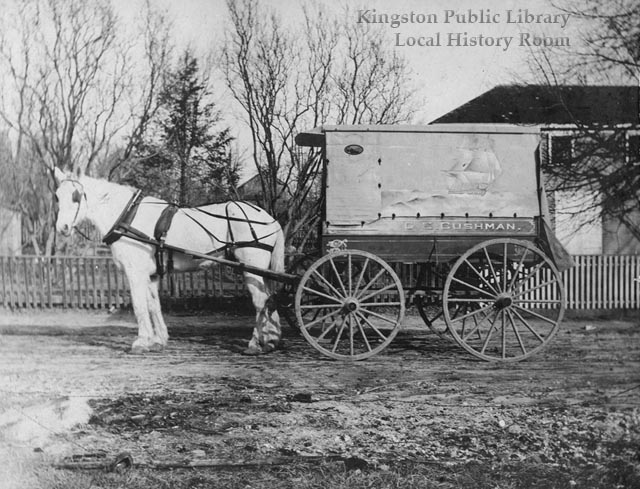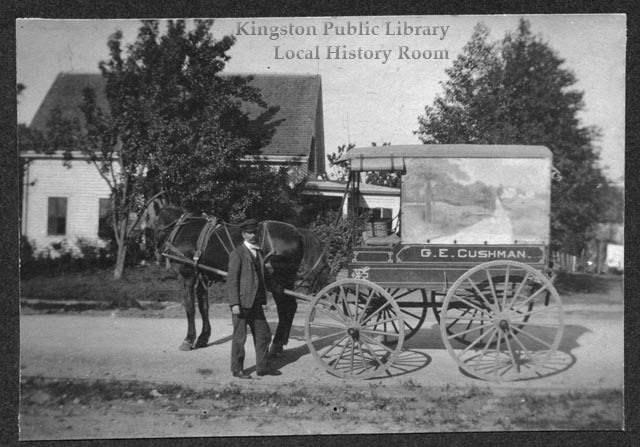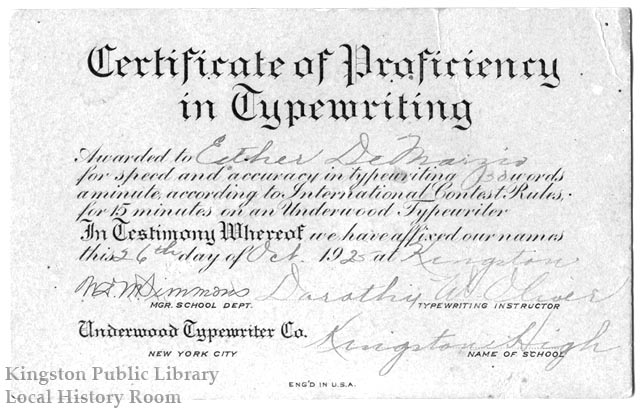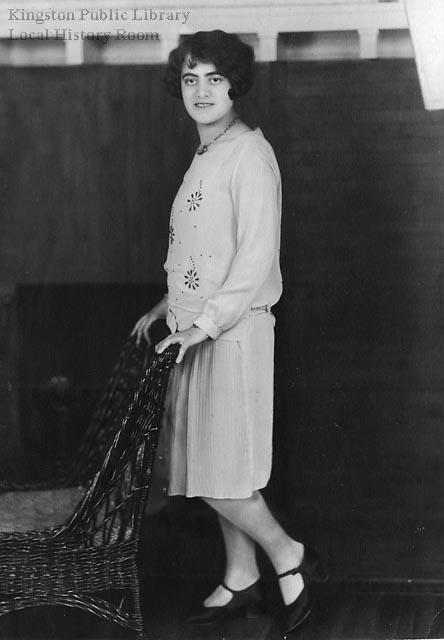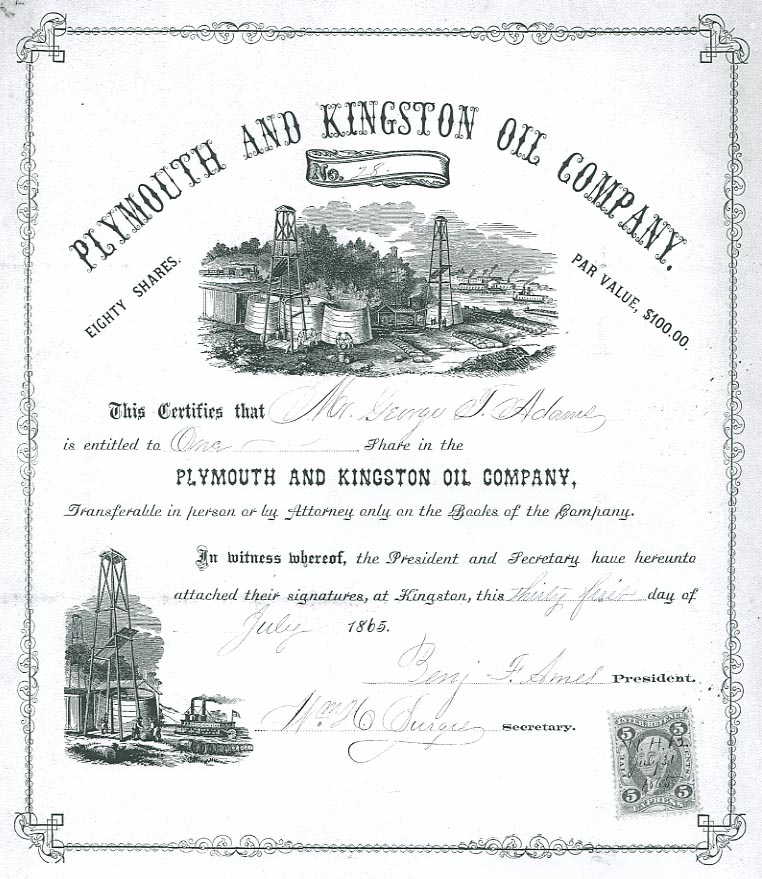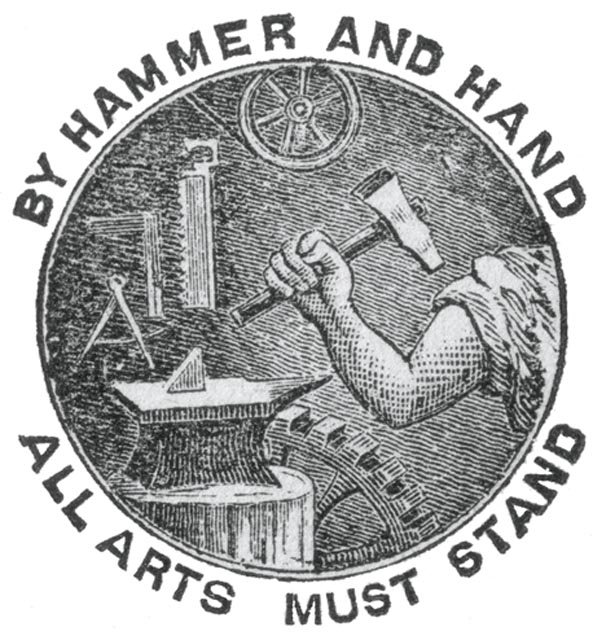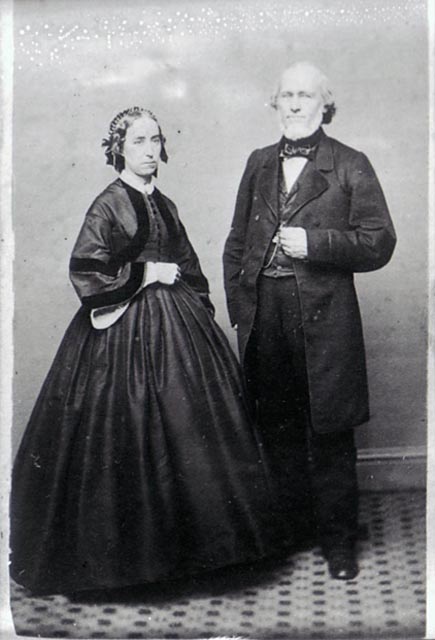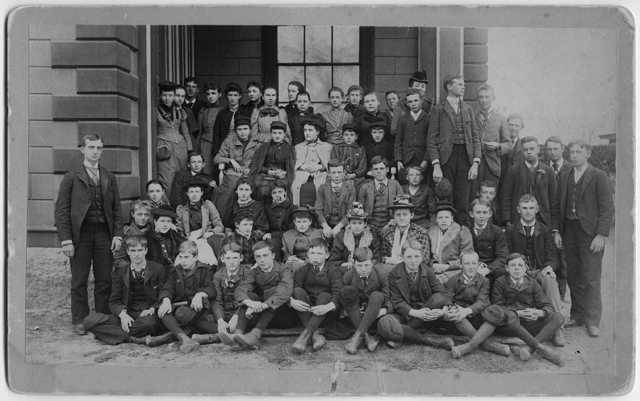
The spring is sweet for many reasons, not least of which is the end of the school year. These Kingston High School students, posed on the steps of that august institute of learning, probably looked forward to three months off as much as their counterparts today.
The old high school stands no more; the site on Main Street is now occupied by the Kingston Police Department. Dedicated on May 10, 1867, KHS served generations of students until replaced in 1955 by the brand new Silver Lake Regional High School. The school-age population had long outgrown the old building, which according to one newspaper account “was inadequate and unsound…in a state of condemnation by the State building inspector.” The KHS building stood vacant until October 1962, when it was demolished.
